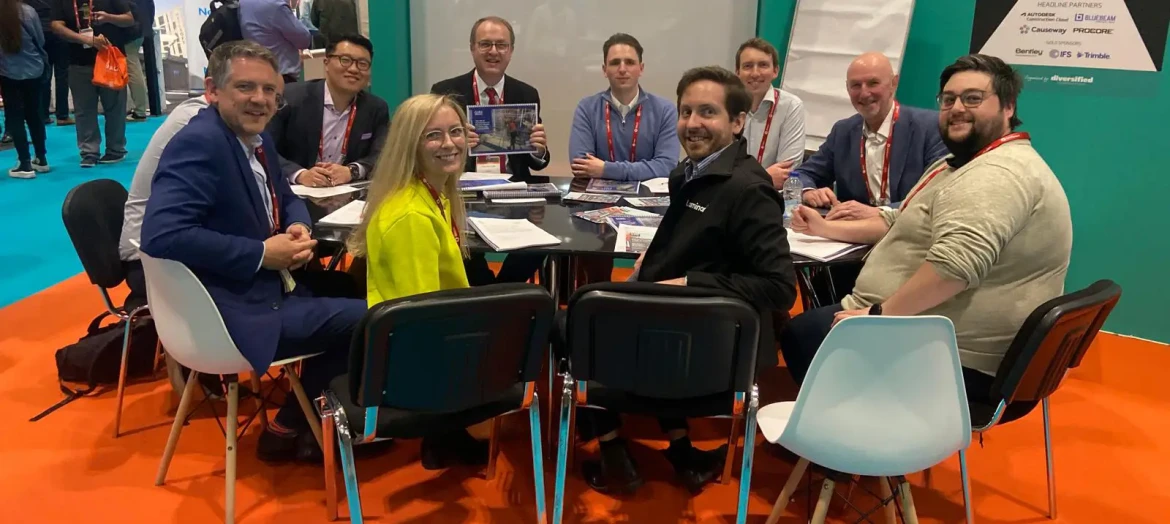GIRI at Digital Construction Week - how technology can reduce error
2 Jul 24
GIRI organised a ‘tabletop talk’ at this year’s Digital Construction Week to bring the topic of the use of technology to reduce errors in construction to the attention of the more than 3,000 visitors to the show. GIRI research has shown that errors and rework cost the construction industry more than its entire profit, so the opportunities and benefits of improvement are huge.
Digital Construction Week (DCW) is the premier exhibition in the UK for digital tools for the design and construction world. It is held each year over two days at the Excel Centre in East London. This year, for the first time, it included round table discussions on some of the important questions facing construction. GIRI’s discussion was led by the chair of its Technology Working Group, John Priestland. It was also attended by the GIRI chief executive Cliff Smith, and 10 other professionals from design firms, contractors, consultants and technology providers.
Causes of error
The discussion began by considering the factors that lie behind errors in the sector. This focused on the need for early and unambiguous decision-making in the design process and the importance of clients being clear about what they want and checking that their consultants understand this. In other words, it was agreed that errors are usually the result of poor communications and the lack of a ‘controlling mind’ to link and integrate everything that is going on.
Too much superfluous data is recorded and, instead, we need to focus on the intelligence that informs better decision-making. There is also a capability and skills gap, meaning we need expert systems that help people do the right things in the right order. For example, clients often specify that projects should be designed to BIM Level 2, but when questioned, they do not really know what this means or why they should want it.
The discussion covered the challenge of ‘human factors’, recognising that while technology will do what it is supposed to do, people are more unpredictable and may not behave as expected. Cliff Smith pointed to the design of a three-pin plug as a great example of human-centric design (try putting a plug into a socket the wrong way round). The idea of creating workflows that ‘reduce the cognitive load’ was discussed – that is, creating construction processes that work with, rather than against, the way in which our brains process and store information. Offsite manufacturing, and the creation of modules that are then simply connected together on site, is a good example.
Digital clerk of works
One of the more interesting suggestions was the need for a digital clerk of works that uses laser scanning and sensors combined with computer vision and machine learning to inspect the workmanship, quality and safety of work on construction sites and reports back to the site, management and clients. From an error perspective, this would spot mistakes quickly and build in learning loops to design out those errors in the future. It could also help determine production rates, contributing to efficiency too.
UK-based start-up, Contilio is already well on the way to building such a system. Its business development director Jack Li, who took part in the discussion at DCW, said: “Our 3D AI platform includes automated defect detection, quality verification and progress tracking for building and infrastructure projects, and is already saving our customers millions in avoided rework.”
Mo Shana’a, founder and CEO of Morta, added: “Clients do not do the checking and tracking themselves, so they would benefit from an ‘expert system’ that could do so. That’s why at Morta we work with clients to replace manual Excel-based trackers with automated cloud-based information hubs, particularly for design deliverable tracking.” Morta may well be part of the ‘glue’ that allows a ‘digital clerk of works’ to combine information, point solutions and teams together.
What all the participants agreed is that error reduction is everyone’s problem and the complex nature of the construction supply chain makes change more difficult in this industry than most. Simply passing the cost of error from contractor to specialist subcontractor is a case of error transfer rather than error reduction. The tendency towards lowest cost procurement also does not help. But there is a ray of optimism: connected systems such as Common Data Environments enable disparate groups of suppliers to work together in new ways. Where new technology can be combined with enhanced processes, we can improve collaboration and communication to reduce errors and enhance construction outcomes overall.

